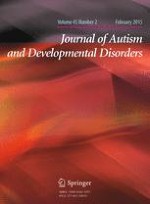01-02-2015 | Original Paper
Tracking the Sensory Environment: An ERP Study of Probability and Context Updating in ASD
Gepubliceerd in: Journal of Autism and Developmental Disorders | Uitgave 2/2015
Log in om toegang te krijgenAbstract
We recorded visual event-related brain potentials from 32 adult male participants (16 high-functioning participants diagnosed with autism spectrum disorder (ASD) and 16 control participants, ranging in age from 18 to 53 years) during a three-stimulus oddball paradigm. Target and non-target stimulus probability was varied across three probability conditions, whereas the probability of a third non-target stimulus was held constant in all conditions. P3 amplitude to target stimuli was more sensitive to probability in ASD than in typically developing participants, whereas P3 amplitude to non-target stimuli was less responsive to probability in ASD participants. This suggests that neural responses to changes in event probability are attention-dependant in high-functioning ASD. The implications of these findings for higher-level behaviors such as prediction and planning are discussed.
